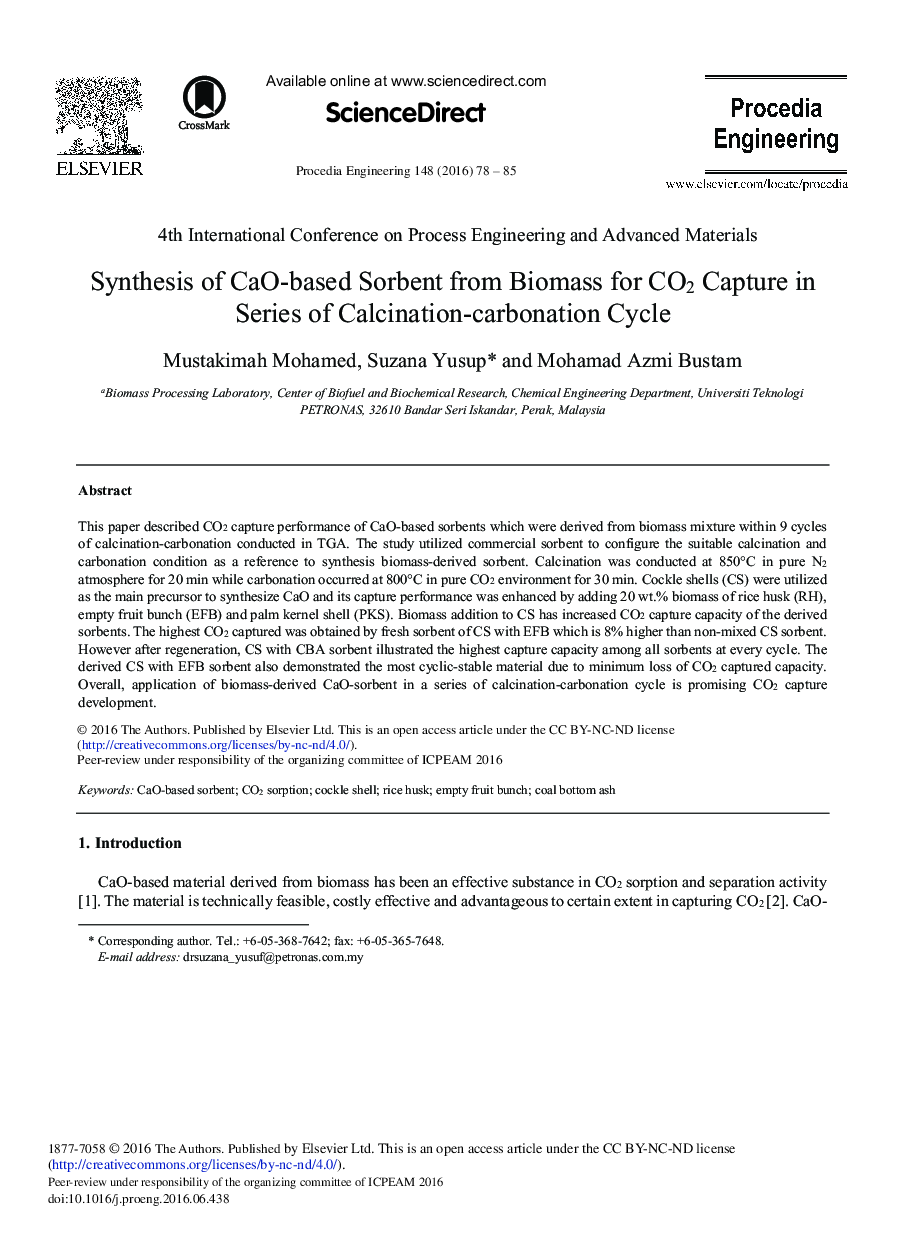| Article ID | Journal | Published Year | Pages | File Type |
|---|---|---|---|---|
| 853259 | Procedia Engineering | 2016 | 8 Pages |
This paper described CO2 capture performance of CaO-based sorbents which were derived from biomass mixture within 9 cycles of calcination-carbonation conducted in TGA. The study utilized commercial sorbent to configure the suitable calcination and carbonation condition as a reference to synthesis biomass-derived sorbent. Calcination was conducted at 850 °C in pure N2 atmosphere for 20 min while carbonation occurred at 800 °C in pure CO2 environment for 30 min. Cockle shells (CS) were utilized as the main precursor to synthesize CaO and its capture performance was enhanced by adding 20 wt.% biomass of rice husk (RH), empty fruit bunch (EFB) and palm kernel shell (PKS). Biomass addition to CS has increased CO2 capture capacity of the derived sorbents. The highest CO2 captured was obtained by fresh sorbent of CS with EFB which is 8% higher than non-mixed CS sorbent. However after regeneration, CS with CBA sorbent illustrated the highest capture capacity among all sorbents at every cycle. The derived CS with EFB sorbent also demonstrated the most cyclic-stable material due to minimum loss of CO2 captured capacity. Overall, application of biomass-derived CaO-sorbent in a series of calcination-carbonation cycle is promising CO2 capture development.
